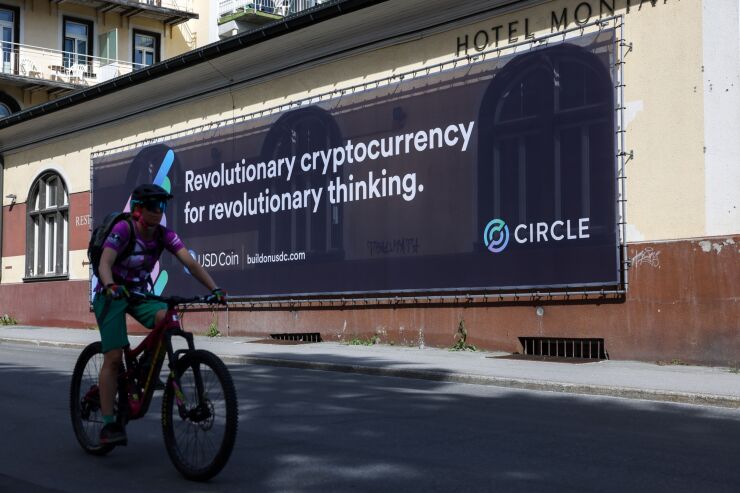
Instant payments often stop at national borders. That's an issue for banks and companies trying to do business around the world.
As popular as real-time payments have become, the underlying protocols are mostly domestic and unable to work with each other.
Circle, which is best known for issuing the USDC stablecoin, is trying to narrow this gap by launching the Circle Payments Network, which connects financial institutions, digital challenger banks, payment companies, and digital wallets to process payments instantly in different currencies and markets.
Other firms tied to cryptocurrency, such as Ripple, are also using crypto-related technology for international payments, creating competition for global real-time payment enablers. Both companies are trying to build partnerships with banks, which are placing value on cross-border payments and faster processing. Forty three percent of banks are investing in payments to improve faster settlement and 36% are stressing cross-border payments, according to
Increasing consumer adoption of digital payments was the top reason, driving 51% of investment. Most of the existing real-time payment networks, such as American protocols
While Circle and Ripple are building cross-border real-time payment networks, other stablecoin executives are pushing for more scale by adding more banks and stablecoin issuers.
In an email, Kevin Lehtinitty, CEO of Borderless.xyz, a stablecoin payments network, said there is still room for more interoperability by developing a technology layer that can bring different networks together.
The growth of digital payments, coupled with the U.S.'s new open banking framework, may finally move the needle for an alternative form of credit decisioning.
"As issuers race to build their own networks, fragmentation will accelerate," Lehtinitty said. "This moment reinforces the need for a credibly neutral layer, one that welcomes every stablecoin, chain, and geography. It's a bigger-pie moment, not winner-take-all — and the networks that win will be open by design, built for interoperability and global reach."
The size of the network will be key, particularly to serve as an alternative to SWIFT, according to Richard Crone, a payments consultant. "Circle's launch of CPN reads like an effort to retrofit its stablecoin rails into a SWIFT or Ripple-style cross-border system," Crone said. Bold, yes—but only as strong as the bilateral bank agreements underpinning it."
"Would a bank trust an unproven weekend network to move six-figure transactions?" Crone said, adding that relies on having deep bilateral relationships with banks.
Circle's CPN will enable cross-border use cases for businesses, financial institutions and consumers — including supplier payments, remittances, payroll, capital markets settlement, internal treasury operations and digital asset-powered financial applications. The CPN network will use smart contracts, which automatically enable payments when certain conditions are met; and application programming interfaces that allow direct connections between CPN and its participants. These connections can avoid intermediaries such as correspondent banks, and work around differences in local payment schemes.Circle's initial bank partners include Banco Santander, Deutsche Bank, Société Générale and Standard Chartered Bank. These institutions will contribute their expertise in global payments to assist Circle in designing the network.
Partners from the fintech and payment industries include Alfred Pay, BCB Group, BVNK, CoinMENA, Coins.ph, Conduit, dLocal, dtcpay, Flutterwave, FOMO Pay, HIFI, Inswitch, Legend Trading, Nilos, Noah, Nuvei, Onafriq, OpenPayd, RD Technologies, RedotPay, TazaPay, Transfero Group, Triple-A, Trubit, Unlimit, Yellow Card, Zepz and Zodia Markets. The stablecoins include Circle's USDC, EURC and other
Circle has pushed
"Since our founding, Circle's vision has been to make moving money as simple and efficient as sending an email," said Jeremy Allaire, co-founder, chairman and CEO of Circle, in a release. For Circle, CPN can boost its stablecoin and
Among other companies,
Research suggests strong demand for real-time digital international payments. More than two thirds of digital payments are cross-border transactions, according to McKinsey; while more than 75% of consumers desire instant processing for these international payments, the World Bank reports. The overall cross-border payments market totaled about $40 trillion in 2024, according to






